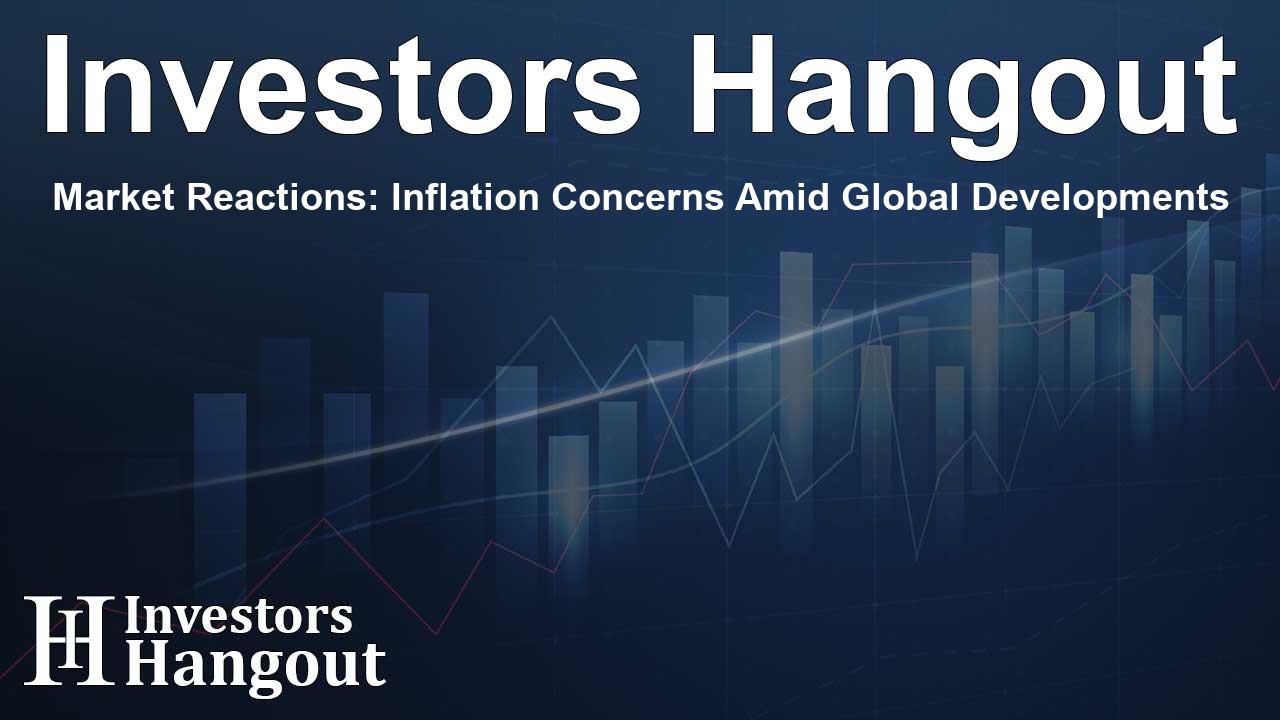Market Reactions: Inflation Concerns Amid Global Developments

Market Stability Amid Inflation Fears
Wall Street exhibited caution as recent U.S. producer price data sparked renewed concerns over inflation. This development has led market participants to reassess the likelihood of a September interest rate cut from the Federal Reserve. The PPI surged significantly in July, marking the highest monthly increase seen in three years, primarily due to escalating service costs and the impact of tariffs on import expenses.
As a result, short-term Treasury yields surged, signifying a shift in market sentiment towards a more hawkish outlook. Voices from the Federal Reserve reinforced this perspective, notably with the St. Louis Fed President dismissing notions of a 50 basis point rate cut and the Richmond Fed chief pointing to resilience in consumer spending.
Fed Policies and Economic Indicators
Amid these discussions, Treasury Secretary Benson acknowledged the need for easing pressure on the Fed while suggesting that monetary policy could be overly restrictive based on neutral rates. Consequently, the odds of a rate cut in September have drastically decreased, now standing at approximately 85%.
In the technological realm, shares of Intel rallied after news suggested the White House is contemplating a strategic investment in the chipmaker. This development reflects a potential shift towards increased government involvement in crucial technology sectors.
Global Economic Dynamics and Geopolitical Influences
Markets continue to keep a keen eye on the anticipated meeting between Trump and Putin. Expectations swirl around discussions focusing on arms control and the ongoing conflict in Ukraine, with both leaders expressing uncertainty about the meeting's potential outcomes.
On the labor front, recent U.S. jobless claims declined slightly, indicating a persistent strength within the labor market. Meanwhile, Peloton is gearing up for a significant product overhaul, featuring advanced AI-driven fitness equipment and refreshed hardware designed to regain its competitive edge.
European Market Performances
European markets have also seen a positive upswing, driven by strong earnings reports within the insurance sector. However, government bonds in the Eurozone have started to decline, reflecting trends seen in the U.S. following the rise in inflation data.
As speculation heightens around the Trump-Putin meeting, concerns have emerged regarding potential U.S. compromises addressing Ukraine’s situation—a sentiment echoed by Eastern European nations, especially as Kyiv remains firm on its territorial stance.
Central European Growth and Political Challenges
The situation in Central Europe, particularly in Poland, shows a robust Q2 growth that could lead to possible rate cuts. In contrast, political controversies abound in Hungary over a new Chinese battery factory. In Romania, the new Prime Minister has flagged a potential default ahead without immediate austerity measures, while the Czech Republic navigates strained relations with China.
Asia-Pacific Market Trends
In the Asia-Pacific region, mixed responses were observed as disappointing economic indicators from China put a damper on confidence about a robust recovery. Retail sales for July grew a mere 3.7%, significantly below analyst expectations, while industrial updates presented a similarly bleak outlook.
Specifically, fixed asset investments saw a substantial drop, highlighting challenges within the infrastructure and property sectors, and urban unemployment reached its highest point in months at 5.2%. These figures underscore the persistent hurdles faced by Beijing amid ongoing property market woes and dwindling consumer sentiment.
Regional Highlights and Corporate Movements
Regional market performances varied, with Hong Kong's Hang Seng index slipping under pressure from slowing tech stocks. Conversely, Taiwan raised its growth outlook, buoyed by vigor in its exports. After showcasing robust GDP data, Japan's market showed gains, while Australia's job market improvements suggested a careful approach from the Reserve Bank.
On the corporate front, noteworthy movements included JD.com exceeding revenue predictions yet cautioning about potential margin pressures, alongside Ampol's acquisition of EG Group's Australian operations valued at $1.1 billion. Additionally, Temasek's recent actions—reducing holdings in JD.com and Alibaba—hint at a wary stance on the Chinese tech landscape.
Looking Forward: Economic Perspectives
Forecasts indicate that the Federal Reserve is likely to preserve its cautious stance as inflationary pressures remain significant, tempering expectations for aggressive rate cuts. The upcoming Trump-Putin summit promises to influence geopolitical landscapes, albeit with major breakthroughs appearing unlikely given the ongoing tensions and concerns across Europe.
Furthermore, Asia-Pacific markets indicate that while some optimism persists in Taiwan and Japan, broader economic challenges remain, particularly for China. In contrast, corporate maneuvers, including significant government engagement in industries like semiconductors and strategic acquisitions, highlight evolving dynamics amidst a complex global market. Together, these developments sketch a picture of a careful and turbulent market environment, filled with mixed signals across various regions and industries.
Frequently Asked Questions
What recent economic data has influenced market reactions?
Recent U.S. producer price index data indicated a significant rise in prices, causing concerns about inflation that influenced market stability.
How does the upcoming Trump-Putin meeting impact financial markets?
The anticipated discussions between Trump and Putin regarding geopolitical issues, especially concerning Ukraine, are closely monitored for their potential influence on market dynamics.
What is the outlook for the Federal Reserve's interest rate policy?
The Federal Reserve is likely to maintain a cautious approach on interest rates due to persistent inflationary pressures, lowering expectations for aggressive rate cuts.
What challenges are facing the Chinese economy?
Disappointing economic indicators such as slowed industrial output and decreased consumer spending suggest that China’s economy faces significant recovery challenges ahead.
How are corporate strategies evolving in the tech sector?
Recent developments suggest increased government involvement in tech firms like Intel, signaling a strategic shift towards national interest in crucial industries.
About The Author
Contact Ryan Hughes privately here. Or send an email with ATTN: Ryan Hughes as the subject to contact@investorshangout.com.
About Investors Hangout
Investors Hangout is a leading online stock forum for financial discussion and learning, offering a wide range of free tools and resources. It draws in traders of all levels, who exchange market knowledge, investigate trading tactics, and keep an eye on industry developments in real time. Featuring financial articles, stock message boards, quotes, charts, company profiles, and live news updates. Through cooperative learning and a wealth of informational resources, it helps users from novices creating their first portfolios to experts honing their techniques. Join Investors Hangout today: https://investorshangout.com/
The content of this article is based on factual, publicly available information and does not represent legal, financial, or investment advice. Investors Hangout does not offer financial advice, and the author is not a licensed financial advisor. Consult a qualified advisor before making any financial or investment decisions based on this article. This article should not be considered advice to purchase, sell, or hold any securities or other investments. If any of the material provided here is inaccurate, please contact us for corrections.
